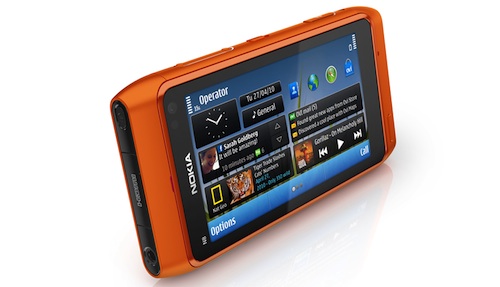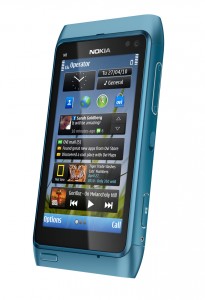
Nokia’s leadership of the mobile phone market, especially in smartphones, has come under increasing pressure in the past few years and many of its latest devices have left consumers cold.
In a bid to get back into the game, Nokia decided to take a step back and start from scratch. It promised a fresh new device and more focus on the operating system.
The N8 may not be a heavyweight contender to take on some of the new Android smartphones and the popular iPhone 4 from Apple, but it is certainly a big step in the right direction for the Finnish company. Nokia has started to get its mojo back.
Off the bat, the most striking aspect of Nokia’s N8 is that it is possibly the most rugged smartphone on the market today. It has a slick metal chassis, which lives up to its reputation as scratch proof. It handles the knocks and scrapes of daily use exceptionally well. The fragility of the new iPhone 4 is stands out next to the N8.
Some of the more exciting technology advancements on the device — like its 12-megapixel camera — do mean that it’s slightly more bulky than some other devices in its class.

Like the iPhone, the N8’s battery is not accessible unless you have a toolkit handy. The microSD and Sim card slots are accessible through hinged slots on the side of the phone.
The device supports microSD cards up to 32GB in size and comes standard with a 16GB card.
It also supports a range of connectivity options, including cellular broadband with a maximum download speed of 10,2Mbit/s.
The N8’s screen quality is exceptional and the 3,5-inch Amoled display — at 640×360 resolution — displays colours well.
But the real standout feature on the N8 is its superb camera, which shoots incredibly sharp high-definition video. It also has an HDMI port that allows you to plug straight into your flat-panel TV. You can even plug in a portable hard drive or flash drive and use the N8 as a media centre for your TV.
The N8’s battery life is decidedly average — we got just under a day with heavy use, only slightly outlasting the iPhone 4’s notoriously poor battery.
The most anticipated aspect of the N8 is its new operating system, Symbian^3. Though the new version of Symbian is a dramatic step up over Series 60, it is still a little disappointing.
The software is fast, even with the relatively slow 680MHz ARM 11 processor under the hood. Most devices in its class now use 1GHz or faster processors.
In a nod to Android, the new Symbian has multiple home screens — three, to be exact — all of which can be populated with widgets.
Widgets are stacked in four rows on each screen, and can be viewed perfectly in both landscape and portrait modes.
But customising the screens can be quite a trying experience, and it’s difficult to move widgets between screens – something Apple perfected ages ago on the iPhone.
The N8, much like Research in Motion’s BlackBerry devices, needs some serious work to make it easier to connect to Wi-Fi networks.
Once connected, applications are easy to find in the Ovi Store, though the phone already comes with some of the more interesting applications. There’s free navigation and maps for use with the integrated assisted GPS.
One of the most frustrating aspects of the phone is the lack of a Qwerty keyboard when you are using it in portrait mode. The only options you have are triple-tap or T9, creating nasty visions of our brick handsets from years ago.
Also, the on-screen keyboard takes up most of the screen. This is not so bad when inputting a contact name, but it’s exceptionally frustrating when using the Web browser.
All in all, the N8’s hardware far outclasses the software it ships with. And although the N8 is big step in the right direction, Nokia still has some way to go to catch up to the leaders in the smartphone space. — Candice Jones, TechCentral
- Subscribe to our free daily newsletter
- Follow us on Twitter or on Facebook




